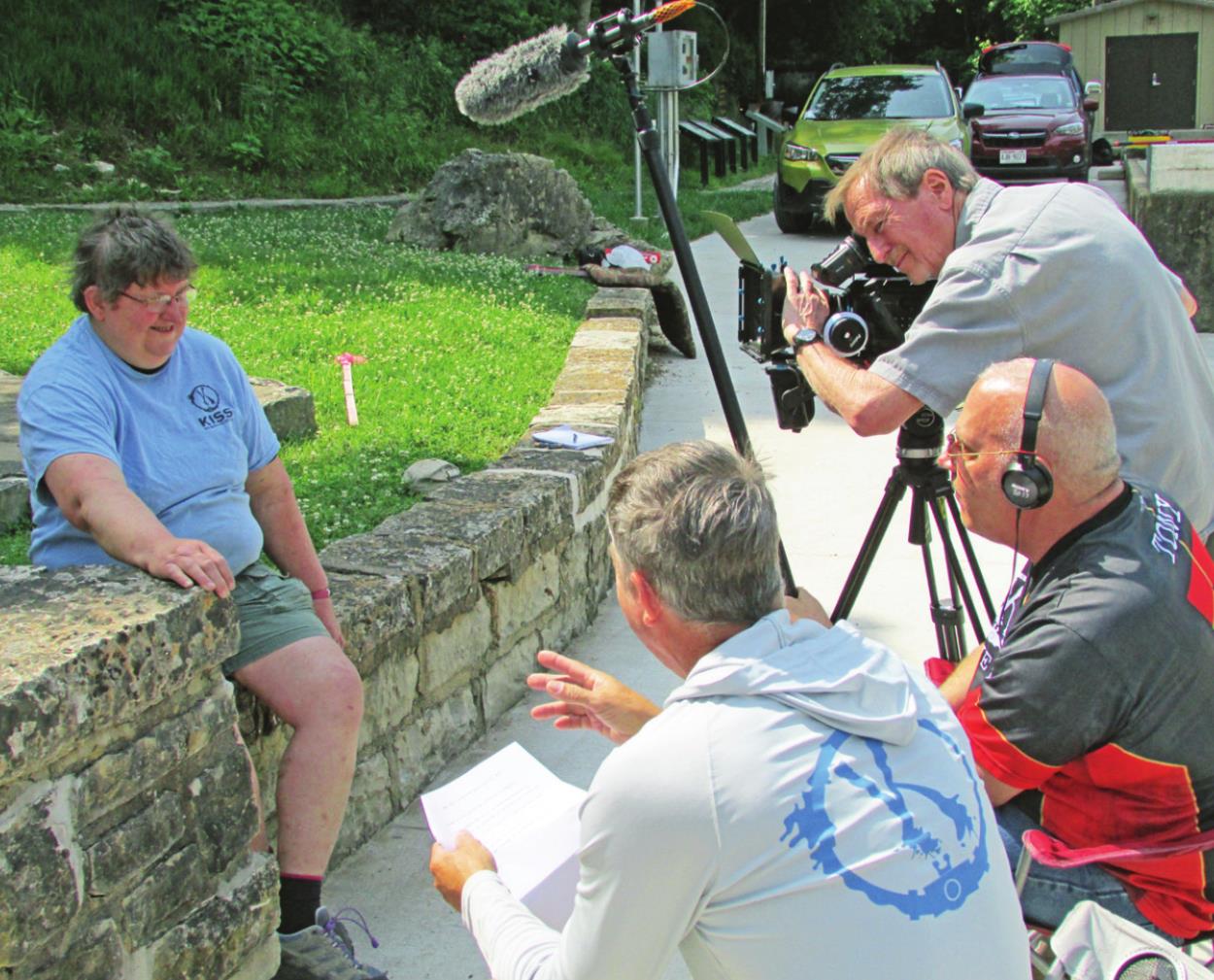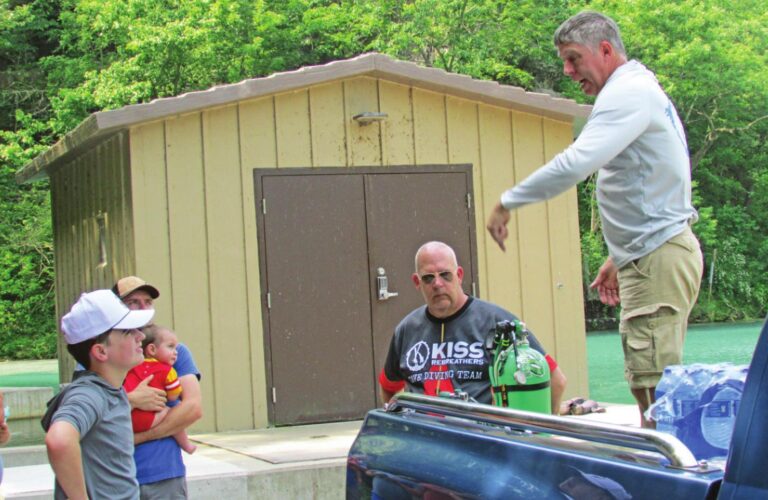With their permit from the Missouri Department of Natural Resources (DNR) renewed through the end of December, the KISS Rebreathers dive team will continue their scheduled, monthly weekend explorations of Roaring River Cave, “at least through November,” head diver and KISS CEO Mike Young said.
Young says that the DNR permit issued to KISS Rebreathers for the next six months is a bit different than the one for previous months.

“This permit allows us to collect a set number of aquatic organism specimens for scientific research,” Young said.
Groups wanting more information about the prospective collection of specimens for study may contact the Missouri DNR, Young says.
With the water flow from the spring at 140 feet per cubic second (CFS) during the divers’ June 10 – 12 visit to Roaring River, they were unable to penetrate the restriction that exists in the cave at a depth of 225 feet.
“The flow needs to be well below 100 CFS in order for us to descend below it,” Young said. “We expect that to happen later in the year, maybe August or September.”
In spite of the depth limitation, diver/cartographer Jon Lillestolen, of Blacksburg, Va., was excited to report the discovery of ‘bunches of critters’ at a depth of 200 feet, a type of isopod he’s never seen in the cave before.
“They’re much larger than the isopods we’ve seen down there in the past,” Lillestolen said.
Isopods, although often called “insects,” are invertebrate crustaceans characterized, in part, by a segmented body. Species of various sizes are found in saltwater, freshwater and on land.
Although Lillestolen was unable to identify the “new” isopod at first glance, he’s hoping that research will provide an answer. He and Young are working with state park and DNR officials to determine the best way to collect samples and identify the creatures.
Young says that the identification of underwater creatures is important, as it can provide clues to the extent of Roaring River’s underwater cave system.
“Many people think Roaring River Spring’s water is coming from the Springfield Plateau,” Young said. “And, that may be true. If we can link the presence of certain underwater creatures in Roaring River Cave to those found in the plateau, we can make educated deductions which point to that possibility.”
Perhaps more interesting, says Young, is the possibility that Roaring River’s cave system is unique from those of the Springfield Plateau or any other system.
“Solution caves,” such as Roaring River Cave, are prevalent across southern Missouri and northern Arkansas, which are karst regions. In karst areas, acidic water has carved away at soluble limestone and dolomite for thousands of years and has left behind underground – and often underwater – labyrinths.
According to Technical Diving International (TDI), solution caves are the most extensive type of underwater cave systems in the world and passages can branch out and continue for miles. Sometimes, known cave systems connect with each other at obscure points. Others are isolated from each other and may contain their own unique ecosystems.
“Sometimes, in isolated cave systems, you can find organisms that are not found anywhere else in the world,” Young said.
Young cited as an example the protected Devil’s Hole Pupfish found only in Devil’s Hole, on the Nevada side of Death Valley.
While no pupfish have been found in Roaring River Cave, diver Tony Bryant, a retired military colonel who fills the role of surface manager on many of the KISS team’s expeditions to the park, jokingly told visiting children that a cave-adapted crocodile had been spotted in the spring. The children, he said, were saucer-eyed for a bit, until he admitted his prank.
In a detour to Joplin, the divers delighted children and other diving enthusiasts with a slide and video presentation, an equipment display and a kids’ activity with teeth from a megalodon (an extinct species of shark) as prizes. The summer reading event was hosted by the Joplin Public Library, and was initiated by children’s librarian Christina Gibson.
A similar event is being planned in Barry County, with details to be announced when plans are finalized.
With a larger crew of divers back at Roaring River for the June exploration, more extensive surveying of the cave above the restriction was conducted and more underwater footage was shot.
The KISS Rebreathers divers will return to Roaring River State Park July 8 – 10.
The team’s Aug. 19-21 visit will coincide with Kids’ Fishing Day at the park on Aug. 20. Celebrity Dive Talk hosts, Woody and Gus, will also be present that weekend to record footage of the Roaring River dive for an upcoming episode of their popular Youtube productions.




